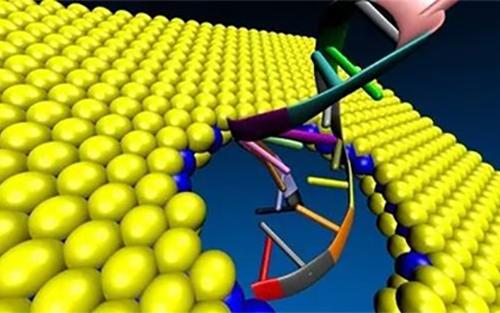Scientists use third-generation gene sequencing to successfully diagnose rare diseases for the first time
Currently, short-term long-sequencing (SRS) is mainly used for genomic analysis, such as second-generation sequencing. The main features of SRS are high throughput, high accuracy, and low cost, but it cannot solve problems such as highly heterozygous genomes, highly repetitive sequences, high GC regions, copy number variation, and large structural variations. In contrast, long-length sequencing (LRS) has the complementary advantage of clinically detecting the genetic variation of SRS misses. A striking feature of the third-generation sequencing technology is that the read length is longer than the second-generation sequencing. Recently, scientists have successfully used the third-generation sequencing technology to successfully identify the pathogenic large fragment deletion mutation that was not detected by the second-generation sequencing, and finally diagnosed a rare genetic disease. The relevant conclusions are published on BioRxiv. He suffers from incurable diseases, and the second-generation sequencing diagnosis is fruitless. The patient was a Hispanic male with uncomplicated full-term pregnancy and was hospitalized for heart and respiratory problems 10 days before birth. The body is in good condition until the age of 7. At the age of 7, he was found to have left atrial myxoma and underwent surgical resection. At the age of 10, he was found to have a testicular mass, which was identified as a testicular blastoma after resection. At the age of 13, he was found to have pituitary tumors and received conservative treatment. At the age of 16, he was found to have both adrenal pituitary microadenomas and left ventricular and right atrial cardiac myxoma recurrence, and underwent a second simple recurrent myxoma resection. At the age of 18, he again underwent recurrent myxoma resection. At this point, the geneticist believes that his symptoms may be Carney's syndrome (Carney complex), and the Carney syndrome causative gene (PRKAR1A) clinical test, but the test results are negative. At the age of 19, multiple thyroid nodules were found by ultrasound, and he was also diagnosed with ACTH-independent Cushing's syndrome. At the age of 21, he underwent transsphenoidal resection to remove pituitary tumors, but left ventricular recurrent myxoma was found. To date, he has only received conservative anticoagulant therapy to reduce the risk of stroke. In 2016, he considered a heart transplant. The transplant team believes that accurate molecular diagnosis should be performed before heart transplantation. This time they used Illumina's HiSeq 2500 for genome-wide sequencing. Data analysis was performed by Stanford Medicine Clinical Genomics Service. The sequencing identified several single nucleotide variations and fragment deletions as well as insertions, but did not identify any variations that could explain the patient's clinical symptoms. Chitosan is a product of n-deacetylated chitosan. Chitin, chitosan and cellulose have similar chemical structure. Cellulose is hydroxyl group at C2 position, chitin and chitosan are replaced by an acetyl group and an amino group respectively at C2 position. Chitin and chitosan have many unique properties such as biodegradability, cell affinity and biological effect, especially chitosan containing free amino group, which is the only basic polysaccharide in natural polysaccharides. Chitin,Chitosan,Chitosan Oligosaccharide,Carboxymethyl chitosan Allied Extracts Solutions , https://www.alliedadditives.com
The amino groups in the chitosan molecular structure are more reactive than the acetylamino groups in the chitin molecule, which makes the polysaccharide have excellent biological functions and can carry out chemical modification reaction. Therefore, chitosan is considered as a functional biomaterial with greater application potential than cellulose.
Chitosan is the product of natural polysaccharide chitin removing part of the acetyl group, with biodegradability, biocompatibility, non-toxicity, antibacterial, anti-cancer, lipid-lowering, immune enhancement and other physiological functions. Widely used in food additives, textile, agriculture, environmental protection, beauty care, cosmetics, antibacterial agent, medical fiber, medical dressings, artificial tissue materials, drug slow release materials, gene transduction carrier, biomedical fields, medical absorbable materials, tissue engineering carrier materials, medical and drug development, and many other fields and other daily-use chemical industry.